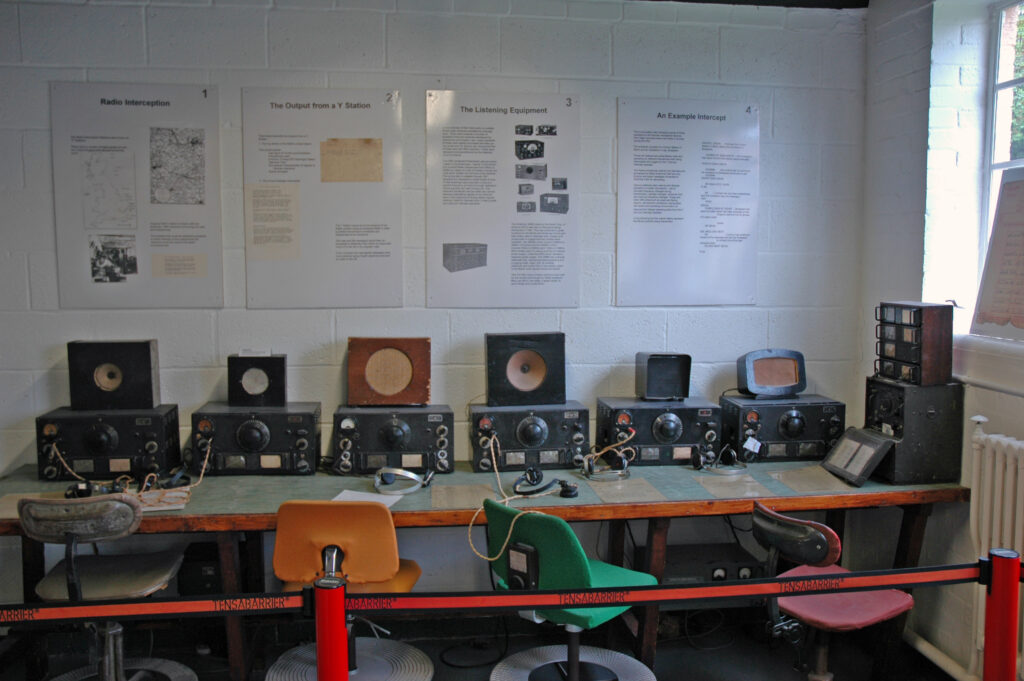The ‘Y’ Intercept Stations
The raw material on which the codebreakers and the Bombes depended was the Enigma-enciphered messages sent by German radio operators in Morse code and picked up by the intercept stations. These intercepts were transmitted via either motorcycle despatch riders or teleprinter to Bletchley Park where they found their way to the codebreaking huts. Without them, there would have been no Bletchley Park and no Bombes. These intercept stations listened in to the whole range of German traffic – Army, Navy, Air Force, the German Secret Service (Abwehr), the various other security organisations and the railways. This traffic was not only picked up in the European theatres of war, involving Italian as well as German messages, but the Middle East and, for Japanese traffic, the Far East, although the Japanese used cypher machines which were totally different from Enigma and so were unsuited to breaking on the Bombes.

At any one time, the Germans could be operating around 50 networks of Enigma operators from the highest level down to field units, each requiring separate breaking on the Bombes or by hand. Some were broken within a 24-hour period, others took days and even weeks and some were never broken. Because the Germans changed the Enigma daily key settings, which the Bombes helped to find, at midnight (the Navy at mid-day), a key broken on the Bombes on one day meant the codebreakers had to start afresh on the same keys again the following day. Hence, the Bombes had to work around the clock. Only six Bombes were on-site at Bletchley Park, with the main bulk of them at special buildings at Eastcote and Stanmore in north London.